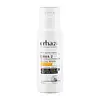What's inside
What's inside
 Key Ingredients
Key Ingredients

 Benefits
Benefits

 Concerns
Concerns

 Ingredients Side-by-side
Ingredients Side-by-side

Sodium Lauryl Sulfate
CleansingSodium Laureth Sulfate
CleansingWater
Skin ConditioningCocamidopropyl Betaine
CleansingSodium Lauroyl Sarcosinate
CleansingTetrasodium EDTA
Sodium Chloride
MaskingHamamelis Virginiana Water
AstringentGlycerin
HumectantGlycolic Acid 3.5%
BufferingCocamide DEA
EmulsifyingPropylene Glycol
HumectantAloe Barbadensis Leaf Extract
EmollientSodium Hydroxide
BufferingLactic Acid
BufferingCitric Acid
BufferingDimethylaminoethanol Tartrate
EmollientNiacinamide
SmoothingAcrylates Crosspolymer-4
Emulsion StabilisingPanthenol
Skin ConditioningPolyquaternium-7
Disodium EDTA
Methylchloroisothiazolinone
PreservativeMethylisothiazolinone
PreservativeBenzoic Acid
MaskingSodium Lauryl Sulfate, Sodium Laureth Sulfate, Water, Cocamidopropyl Betaine, Sodium Lauroyl Sarcosinate, Tetrasodium EDTA, Sodium Chloride, Hamamelis Virginiana Water, Glycerin, Glycolic Acid 3.5%, Cocamide DEA, Propylene Glycol, Aloe Barbadensis Leaf Extract, Sodium Hydroxide, Lactic Acid, Citric Acid, Dimethylaminoethanol Tartrate, Niacinamide, Acrylates Crosspolymer-4, Panthenol, Polyquaternium-7, Disodium EDTA, Methylchloroisothiazolinone, Methylisothiazolinone, Benzoic Acid
Water
Skin ConditioningMyristic Acid
CleansingGlycerin
HumectantPalmitic Acid
EmollientStearic Acid
CleansingSodium Laureth Sulfate
CleansingTriethanolamine
BufferingCocamide DEA
EmulsifyingSalicylic Acid
MaskingPEG-7 Glyceryl Cocoate
EmulsifyingPEG-400
Emulsion StabilisingSodium Hydroxide
BufferingSulfur
AntiseborrhoeicPhenoxyethanol
PreservativeHydroxypropyl Methylcellulose
Emulsion StabilisingParfum
MaskingTriethylene Glycol
MaskingDisodium EDTA
Xylitylglucoside
HumectantAnhydroxylitol
HumectantXylitol
HumectantSodium Chloride
MaskingCellulose Gum
Emulsion StabilisingGlucose
HumectantWater, Myristic Acid, Glycerin, Palmitic Acid, Stearic Acid, Sodium Laureth Sulfate, Triethanolamine, Cocamide DEA, Salicylic Acid, PEG-7 Glyceryl Cocoate, PEG-400, Sodium Hydroxide, Sulfur, Phenoxyethanol, Hydroxypropyl Methylcellulose, Parfum, Triethylene Glycol, Disodium EDTA, Xylitylglucoside, Anhydroxylitol, Xylitol, Sodium Chloride, Cellulose Gum, Glucose
Ingredients Explained
These ingredients are found in both products.
Ingredients higher up in an ingredient list are typically present in a larger amount.
Cocamide DEA is a coconut-derived cleansing agent that creates rich foam and helps to thicken the consistency of cleansing products.
This ingredient effectively removes dirt and oil while helping to stabilize formulations, making it a common addition to shampoos, body washes, and facial cleansers.
It has become less popular in recent formulations due to potential irritation in sensitive skin types and concerns about trace amounts of diethanolamine (DEA), which can potentially form nitrosamines.
While still considered safe at regulated concentrations, many manufacturers now opt for gentler alternatives like cocamidopropyl betaine or other surfactants that offer similar benefits with fewer potential drawbacks.
Learn more about Cocamide DEADisodium EDTA plays a role in making products more stable by aiding other preservatives.
It is a chelating agent, meaning it neutralizes metal ions that may be found in a product.
Disodium EDTA is a salt of edetic acid and is found to be safe in cosmetic ingredients.
Learn more about Disodium EDTAGlycerin is already naturally found in your skin. It helps moisturize and protect your skin.
A study from 2016 found glycerin to be more effective as a humectant than AHAs and hyaluronic acid.
As a humectant, it helps the skin stay hydrated by pulling moisture to your skin. The low molecular weight of glycerin allows it to pull moisture into the deeper layers of your skin.
Hydrated skin improves your skin barrier; Your skin barrier helps protect against irritants and bacteria.
Glycerin has also been found to have antimicrobial and antiviral properties. Due to these properties, glycerin is often used in wound and burn treatments.
In cosmetics, glycerin is usually derived from plants such as soybean or palm. However, it can also be sourced from animals, such as tallow or animal fat.
This ingredient is organic, colorless, odorless, and non-toxic.
Glycerin is the name for this ingredient in American English. British English uses Glycerol/Glycerine.
Learn more about GlycerinChances are, you eat sodium chloride every day. Sodium Chloride is also known as table salt.
This ingredient has many purposes in skincare: thickener, emulsifier, and exfoliator.
You'll most likely find this ingredient in cleansers where it is used to create a gel-like texture. As an emulsifier, it also prevents ingredients from separating.
There is much debate on whether this ingredient is comedogenic. The short answer - comedogenic ratings don't tell the whole story. Learn more about comegodenic ratings here.
The concensus about this ingredient causing acne seems to be divided. Research is needed to understand if this ingredient does cause acne.
Scrubs may use salt as the primary exfoliating ingredient.
Learn more about Sodium ChlorideSodium Hydroxide is also known as lye or caustic soda. It is used to adjust the pH of products; many ingredients require a specific pH to be effective.
In small amounts, sodium hydroxide is considered safe to use. However, large amounts may cause chemical burns due to its high alkaline.
Your skin has a natural pH and acid mantle. This acid mantle helps prevent harmful bacteria from breaking through. The acid mantle also helps keep your skin hydrated.
"Alkaline" refers to a high pH level. A low pH level would be considered acidic.
Learn more about Sodium HydroxideSodium Laureth Sulfate (SLES) is a foaming, cleansing, and emulsifying ingredient. It is created from palm kernel oil or coconut oil. SLES is not the same as sodium lauryl sulfate. It is much milder and less likely to irritate.
SLES helps create foam in personal products. It also prevents ingredients from separating, helping to elongate the shelf life.
Sodium Laureth Sulfate is a type of sulfate. It can be drying. We recommend speaking with a professional about using this ingredient if you have concerns.
Learn more about Sodium Laureth SulfateWater. It's the most common cosmetic ingredient of all. You'll usually see it at the top of ingredient lists, meaning that it makes up the largest part of the product.
So why is it so popular? Water most often acts as a solvent - this means that it helps dissolve other ingredients into the formulation.
You'll also recognize water as that liquid we all need to stay alive. If you see this, drink a glass of water. Stay hydrated!
Learn more about Water